

Joshua Scarsellone portfolio

The attached video is an edited version of my fashion show, including a snippet from the video before the first model appears on stage. The collection, inspired by Edgar Allan Poe’s The Masque of the Red Death, reflects the Victorian setting and the colorful stages of life. I created 28 looks, starting with undergarments as the models prepare for the ball, leading to full attire as they return to the stage.
The collection includes 90+ garments, such as cages, hats, jackets, bloomers, and pants, all made in three months.
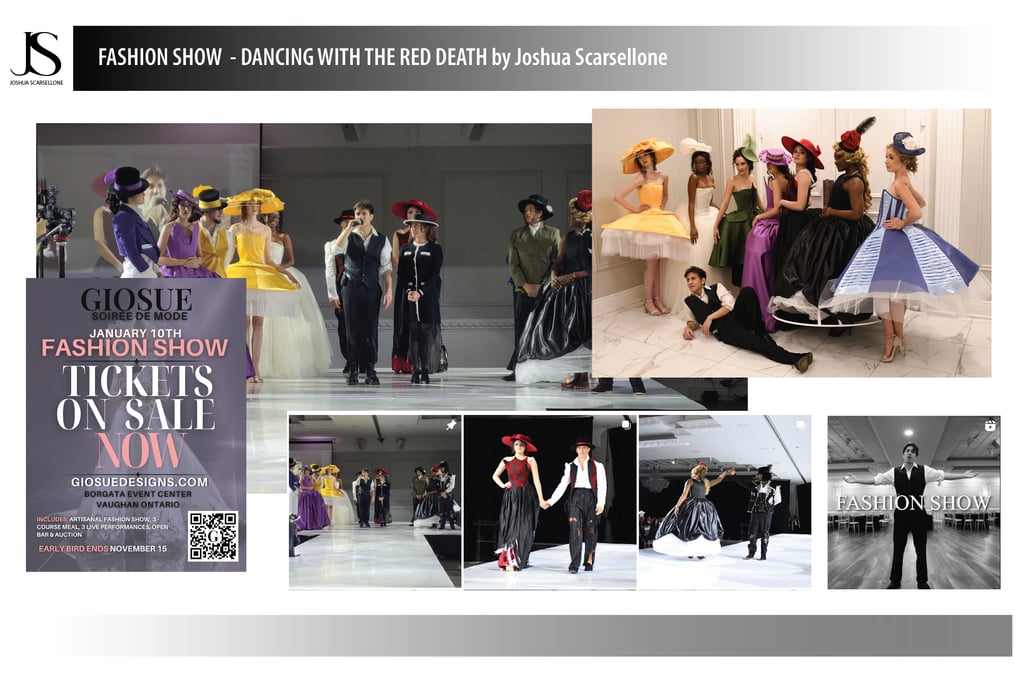

In January 2025, I hosted my first sold-out fashion show with 231 attendees. Preparation began in mid-September 2024 after securing sponsorships to fund the event. I managed every detail,including event planning, hiring staff, booking the venue, advertising, securing sponsors, and overseeing finances. I designed and created the entire collection myself, handling everything from pattern-making and fabric sourcing to fittings, cutting, and sewing. Additionally, I decorated the venue and built the runway myself, sourcing the wood, vinyl, and skirting, and assembling it over a week.
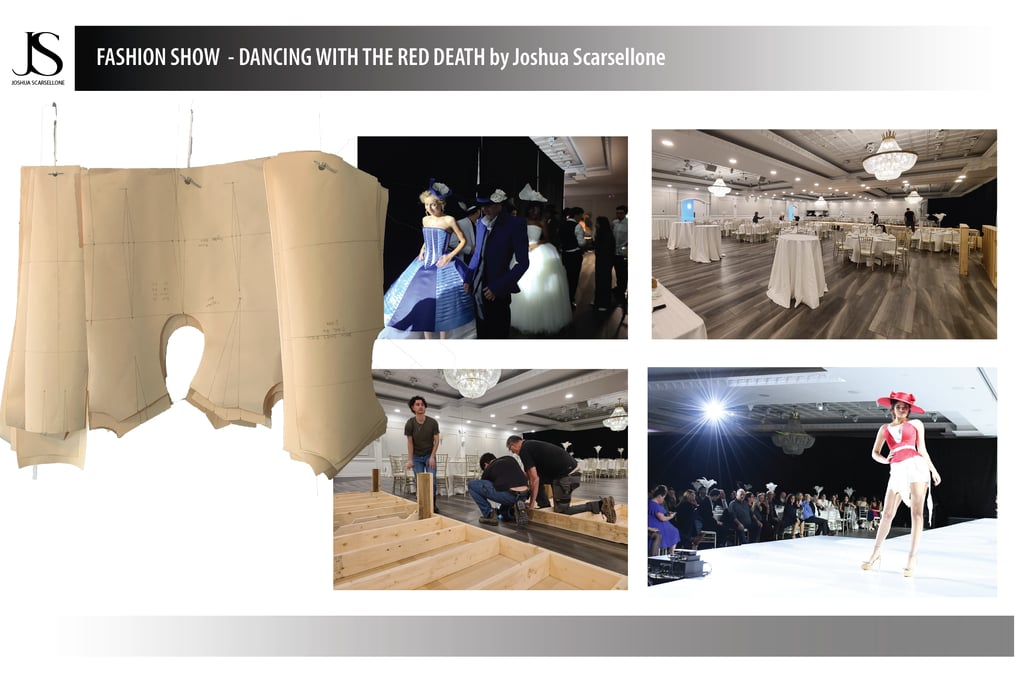

I took full responsibility for manufacturing the garments, creating custom blocks for jackets, bodices, skirts, pants, and shirts. This streamlined the design process, ensuring each piece aligned with my vision. For the women’s pieces, I added adjustability, using Velcro waistbands on gown skirts and grommets on corsets to accommodate measurement changes or weight fluctuations.
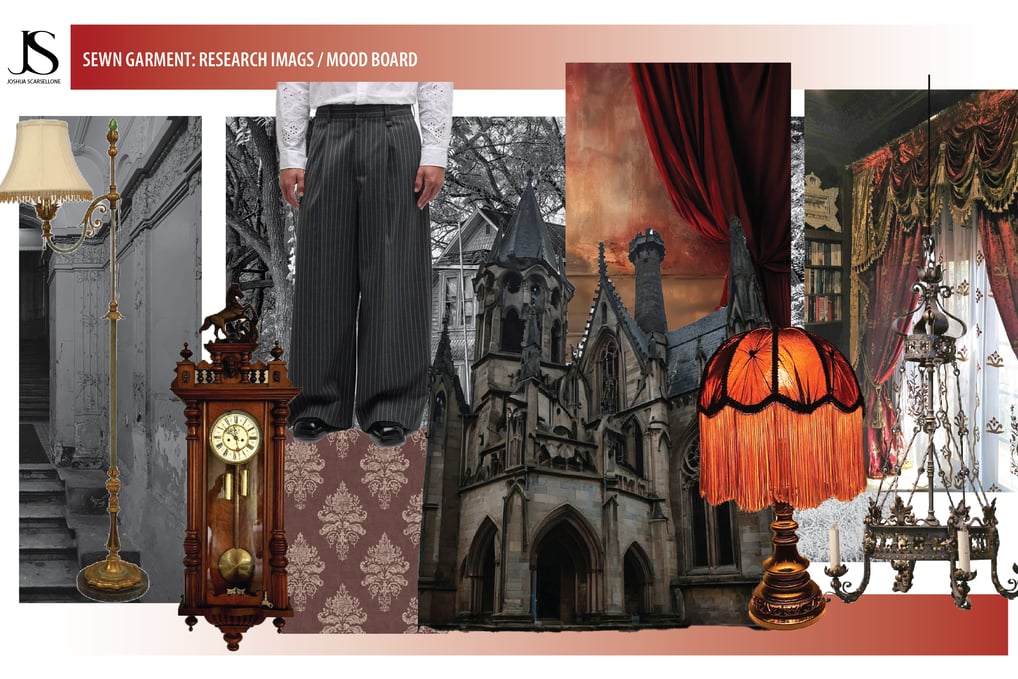

For my first concept I wanted to show my tailoring knowlege and evening wear designs inspired from Victorian architecture, incorporating details from interior elements like wallpaper patterns and lamp strings into the garment designs. Structural shapes from doors and rooftops also influenced the silhouettes, creating pieces that blend historical elegance with modern fashion.
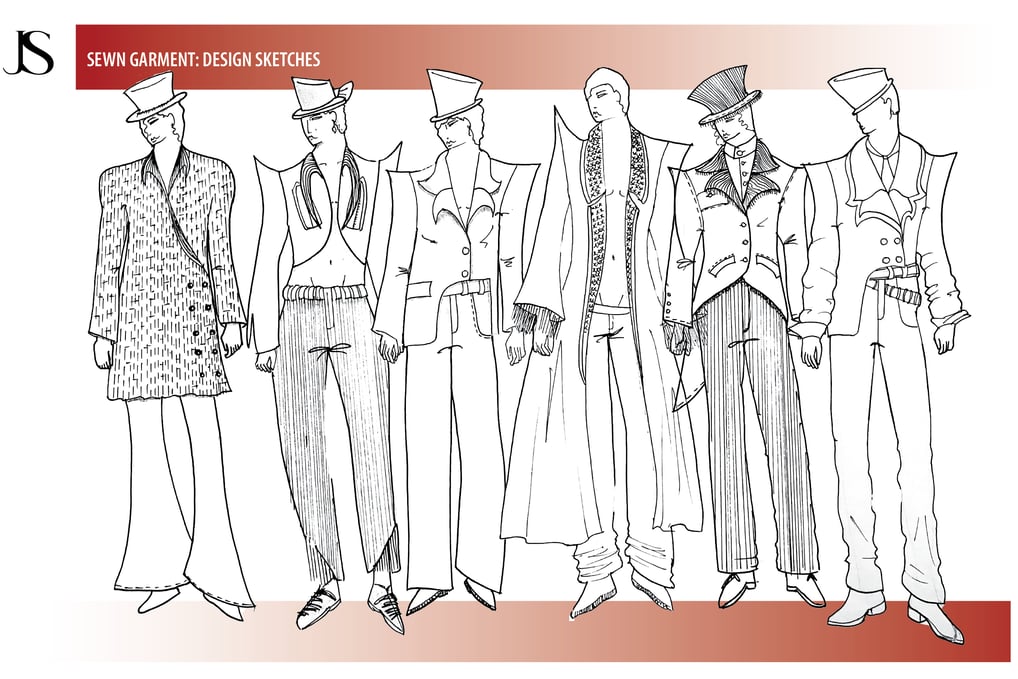

I explored multiple mediums in this project, including texture by replicating the roughness of ripped walls in the first jacket. I also reinterpreted the Victorian theme with a modern twist on top hats. Inspired by the sharp points of Victorian rooftops, I incorporated these angular shapes into the final designs.
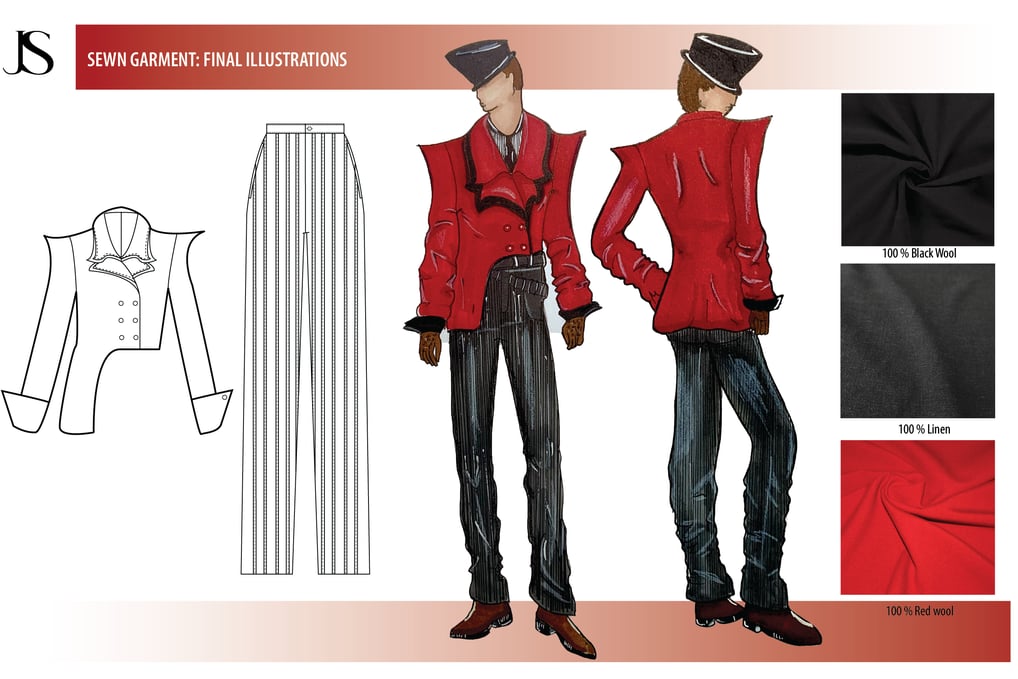

For the final illustration, I chose a gothic look, using fine wool and linen for a Victorian-aged feel. The jacket features sharp shoulder pads, an open front with a circular shape inspired by castle doors, and exaggerated lapels for a vampire-inspired vibe.
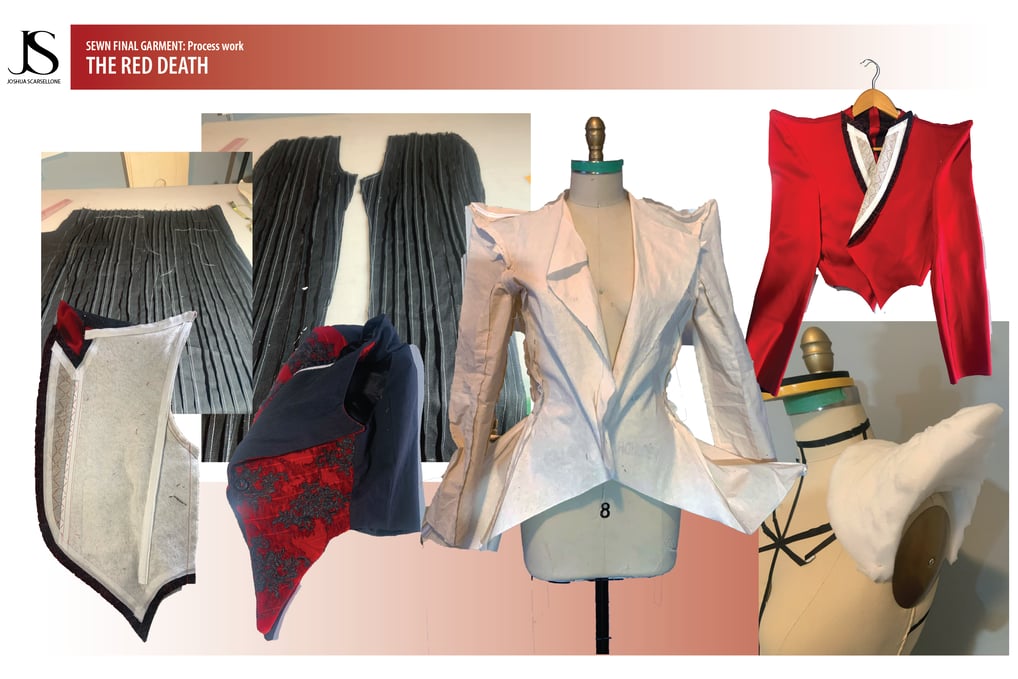

For the jacket, I originally used wire for a flared bottom, but wasn’t satisfied with the shape or movement, so I focused on the shoulders. Foam didn’t give me the sharp edges I wanted, so I switched to heated and molded German plastic boning for a cleaner, pointy silhouette. For the waistcoat, I experimented with velvet and used a roasting rack to create a brick-like texture.
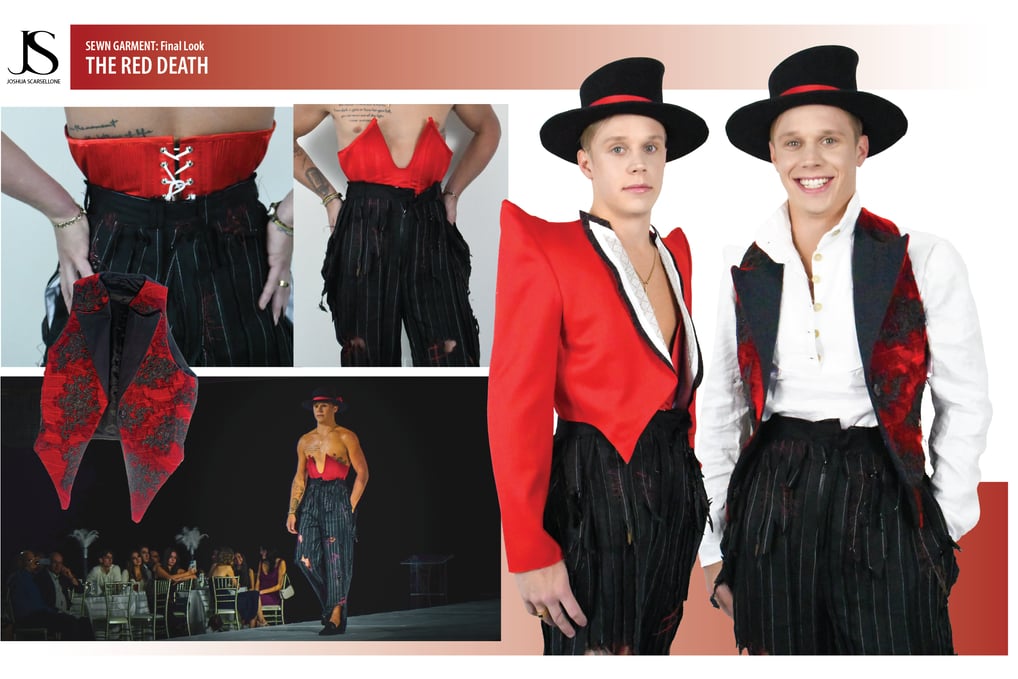

For the pants, I stitched 1/8-inch pintucks to mimic pinstripes and burned the linen to create a distressed, peeling texture. Manufactured holes were cut with dull scissors for a rigid edge, then burned, and hand-sewn for stability while maintaining a raw aesthetic.
The jacket featured a deconstructed approach with hand-sewn boning casing tape fused with wool and shaped using German steel boning. A full canvas construction and cross-stitching connected the front to the lapel, finished with binding tape for clean edges.
The velvet vest complemented the red gown, with hand-sewn lace burned for a distressed look. For an extra dimension and visual appeal, I added texture by pressing the velvet over a wire cooling rack, creating a block-like pattern.
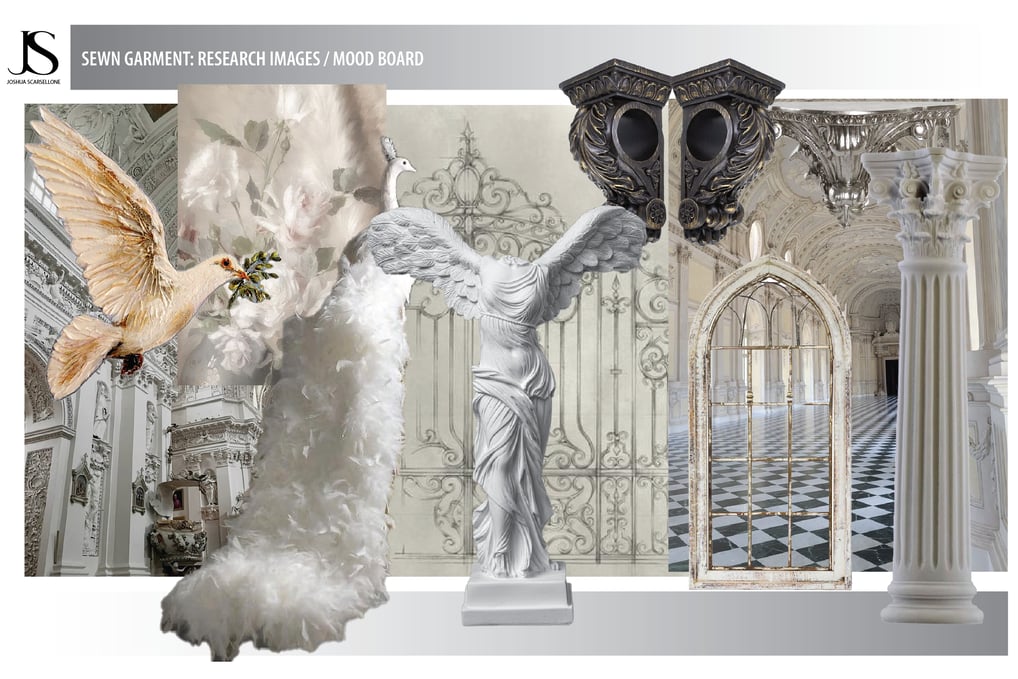

For my second concept, I created bridal attire to showcase my finishing techniques, hand-sewn appliqué, and use of different materials. Inspired by doves, checkered floors, and the architecture of old churches, I incorporated elements from gates and white-feathered animals like doves and peacocks into the designs.
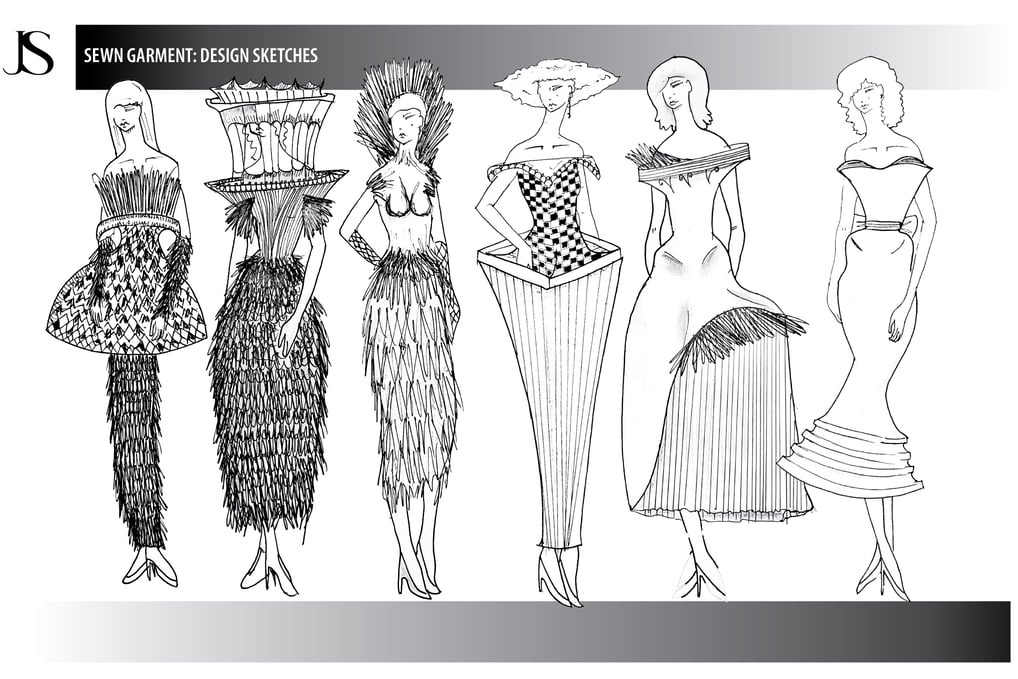

In my sketches, I focused on two key inspirations: animals and architecture. For the feathered pieces, I created a primal look with a "cage hat design." For the architecture, I brought 3D shapes to life, highlighting elegant forms.
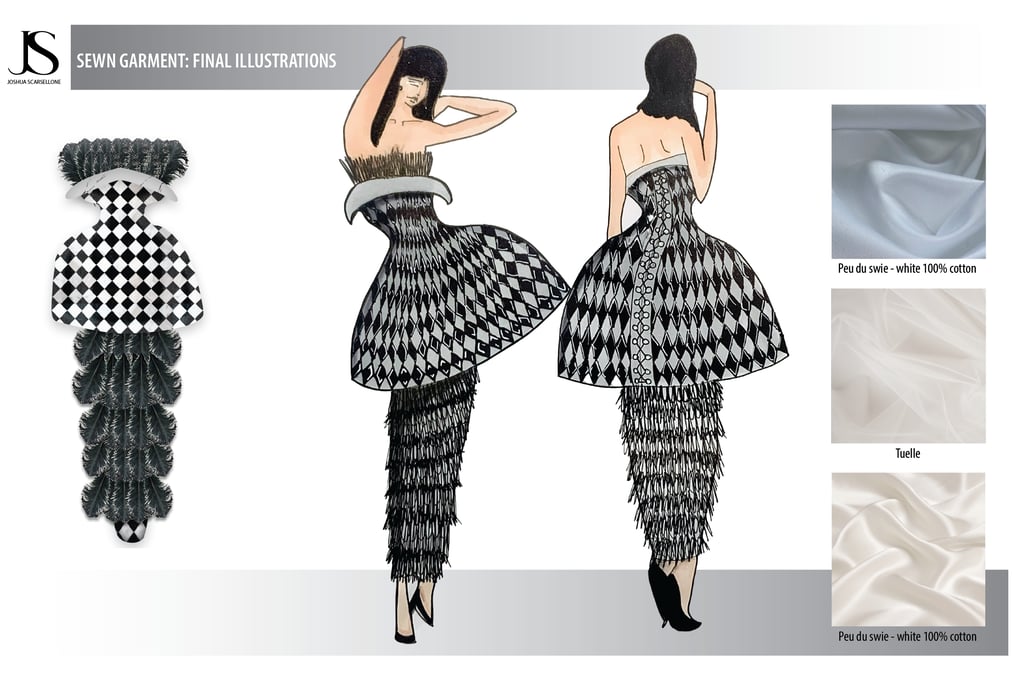

For the final design, I combined both ideas, using texture and contrast to make the piece stand out. I love the strong silhouette of the structured dress, with its marble-like finish, paired with a feathered pencil skirt underneath to add contrast and texture.
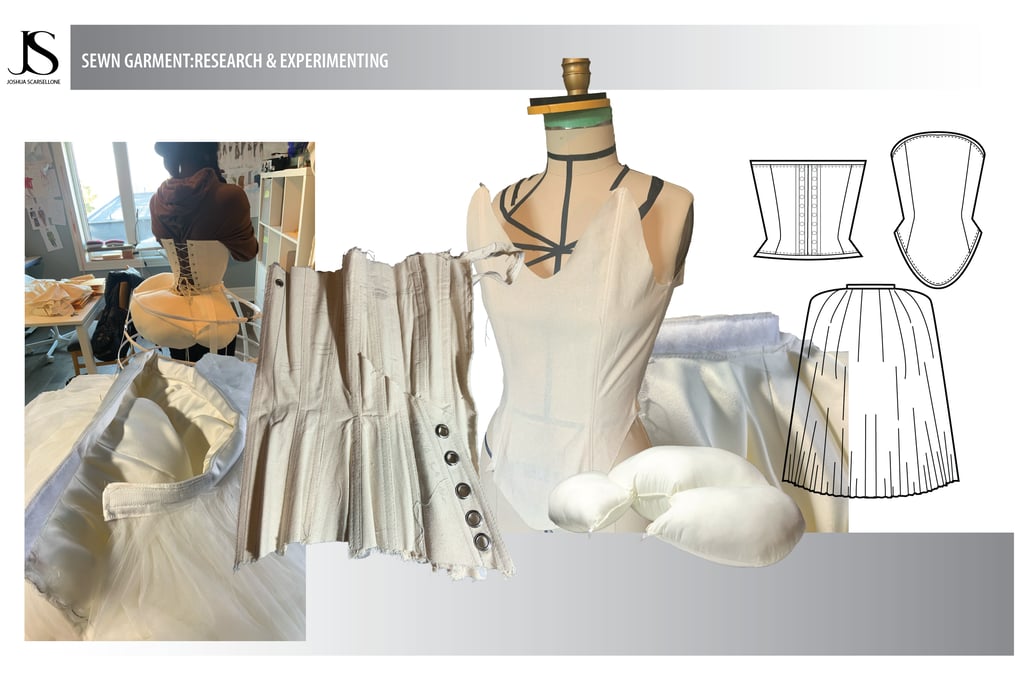

For the white gown, I faced challenges in achieving the desired silhouette. Through multiple muslin trials, I experimented with various shapes but ultimately opted for a streamlined, flat design to maintain the focus on the appliqué details. Another silhouette challenge involved the cage structure, which initially appeared too A-line. To refine the shape, I adjusted the tension of the cage to explore different widths and lengths. Ultimately, I incorporated a bustle pad to enhance the volume and achieve the more sculptural silhouette I envisioned.
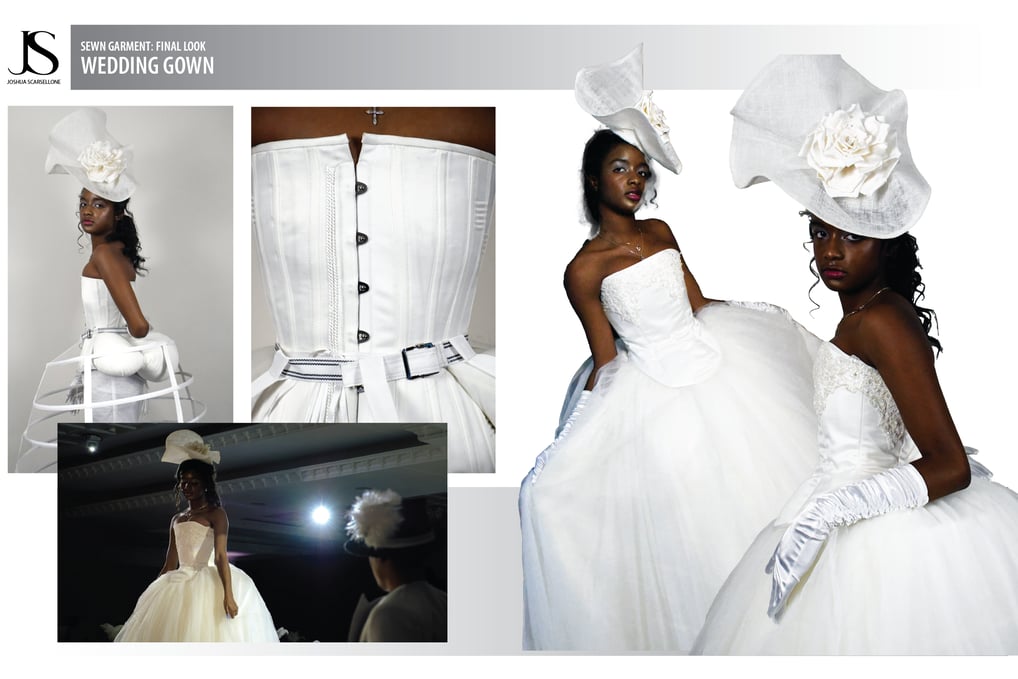

For the corset, I used two layers of coutil as underlining for structure and strength. I also constructed a butt pad from leftover fabric to enhance and highlight the silhouette beneath the cage.
The gown features a single length with multiple layers for volume, texture, and coverage. It is fully lined and clean finished. Lace details were hand-appliquéd. All binding and boning casings were hand-sewn for an elegant, machine stitch-free look. The matching hat, custom designed with Sinamay, was adorned with handmade silk flowers and designed for secure and harmonious attachment to the overall ensemble.
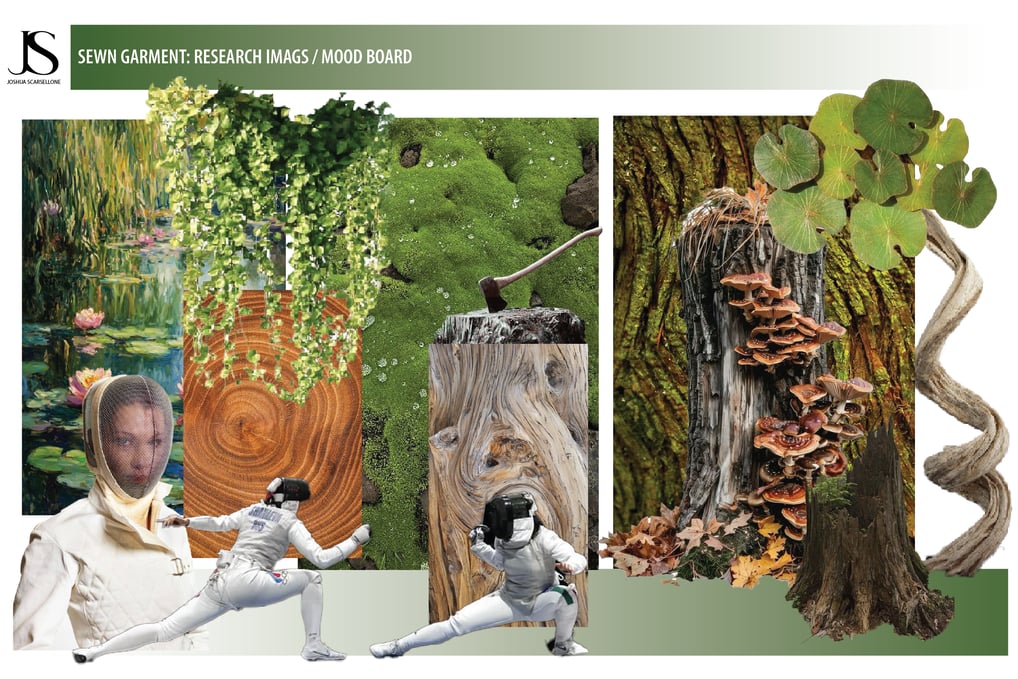

My third concept I wanted to focus on more casual wear inspired by nature, particularly lily pads. I was drawn to their unique shapes and notches, as well as the textured look of wood. Although fencing isn’t directly from nature, the idea of animals fighting for survival inspired me to incorporate a jacket silhouette that echoes this form of combat. Additionally, I was captivated by the twisting and turning of roots, which influenced the fluidity and movement within the designs.
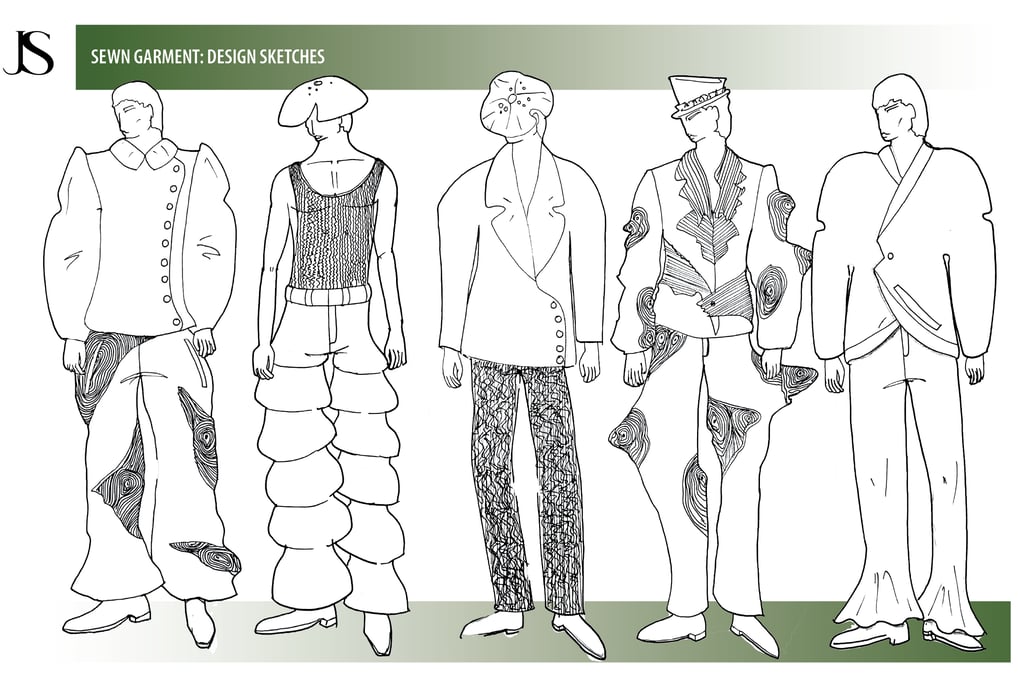

For these sketches, I focused on print design, drawing inspiration from the intricate lines found in tree rings and the irregular shapes of rocks. I also explored the unique form and notches of lily pads, incorporating these elements throughout the designs.
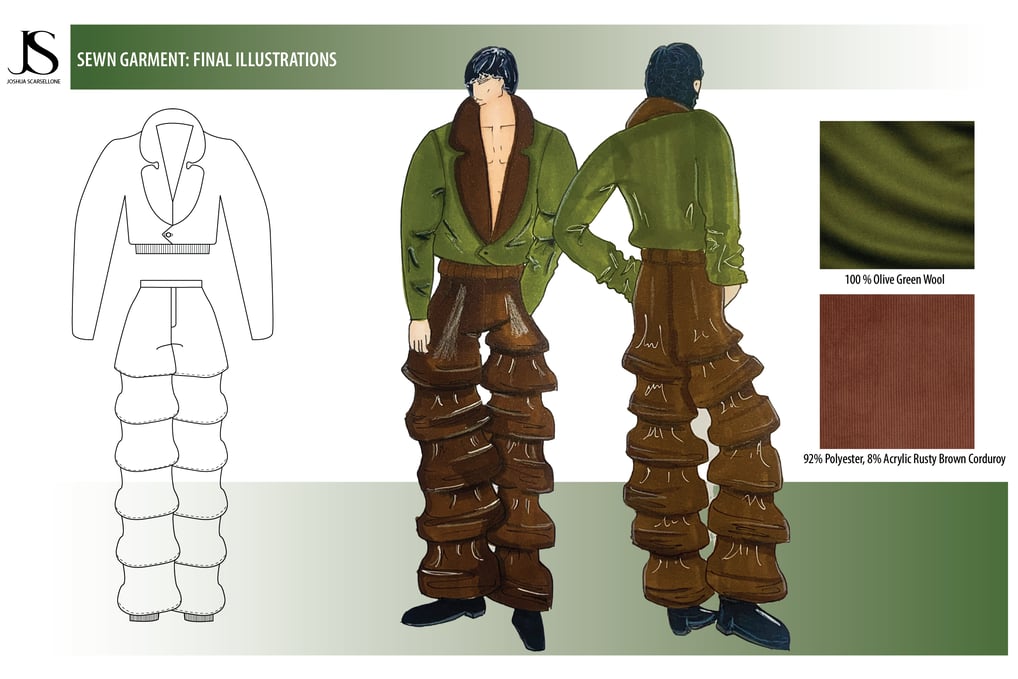

For the final illustration I aimed to create a more casual style with a bold, puffed wool jacket featuring a dramatic, lily pad-shaped lapel. The layered twill pants were inspired by the stacked formations of mushrooms, reflecting their unique shapes through a tiered design.
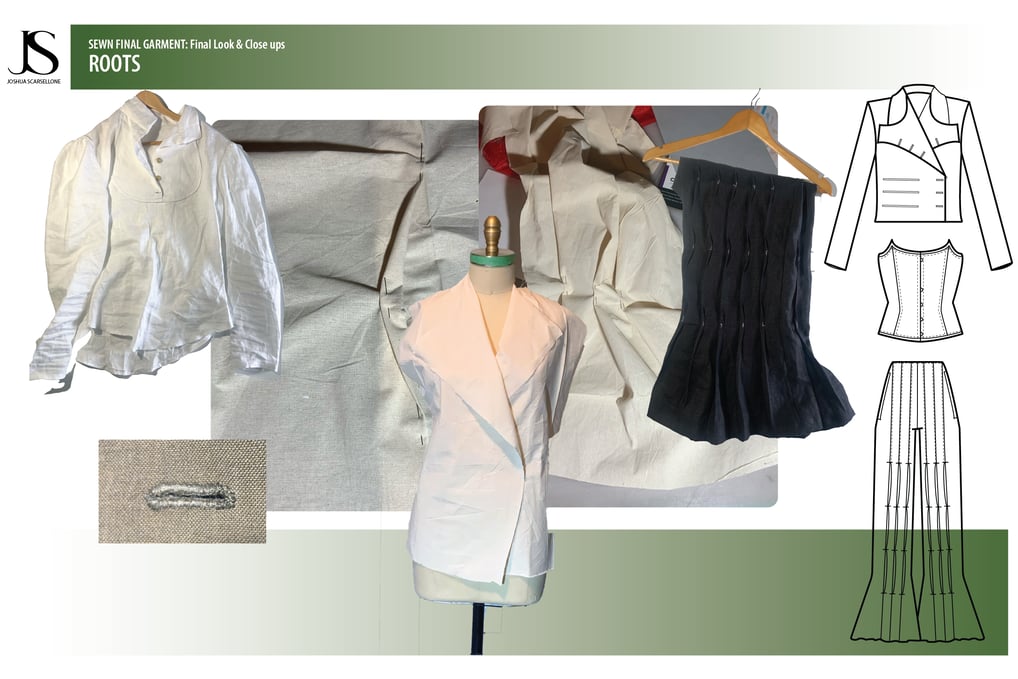

When developing the warping pleats for my final look, I experimented with different variations of the pleats unfolding to create a textured, tree-root effect. For the jacket, I crafted a custom full canvas to complement the unique lapel design, ensuring it maintained the sculptural silhouette inspired by fencing attire.
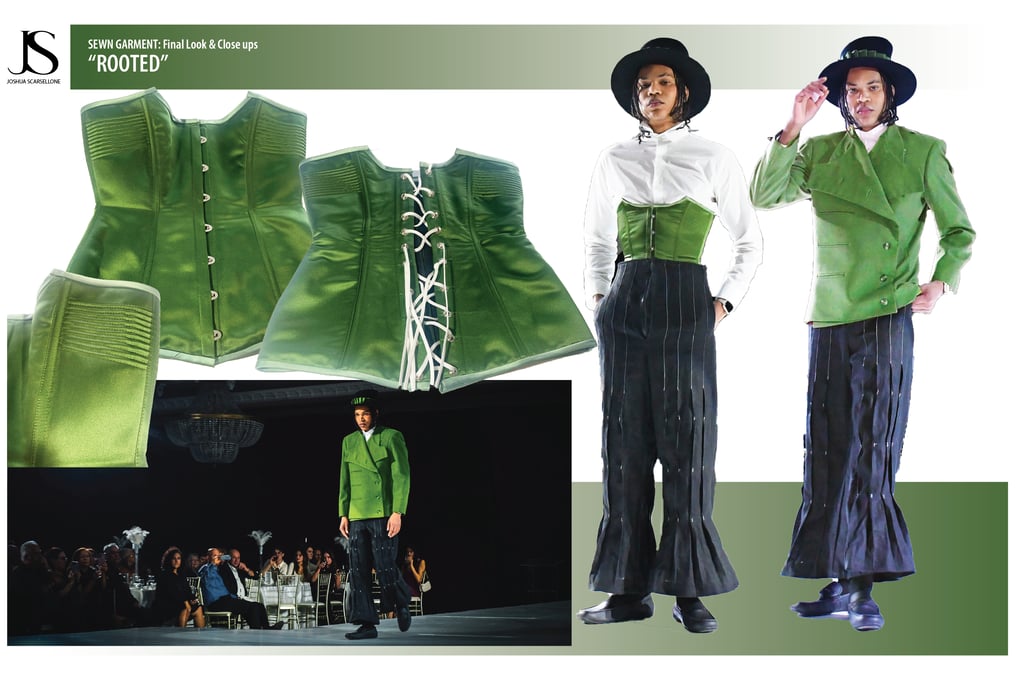

For the pants, I drew inspiration from brown liana vines, a woody plant, and incorporated the swirling motif into the design. To achieve this, I created 1-inch pleats running down the length of the pants, folding each pleat to the opposite side to form the swirl pattern and tacking them down for stability. For a contrasting effect, I used white thread to mimic the appearance of pinstripe pants, adding a refined yet dynamic detail.
The jacket was more intricate in its construction. My goal was to adapt a traditional fencing jacket into a practical, everyday piece while retaining its tailored essence. Establishing the proper roll point for the lapel presented challenges, as the collar initially resisted rolling down smoothly. To resolve this, I adjusted the pattern by enlarging the canvas and reshaping it to align precisely with the pattern pieces.
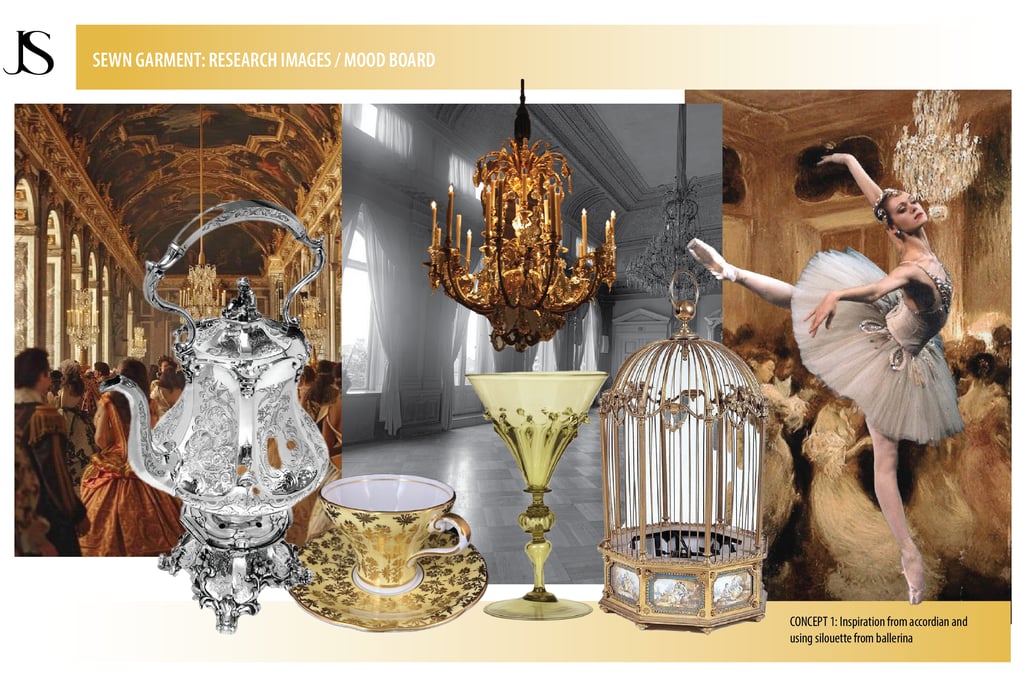

For my last concept, I wanted to showcase my skill with shapes and how I brought them to life. This sewn piece draws inspiration from Victorian ballrooms—the dancing, tea drinking, music, and overall atmosphere—all of which influenced the design.
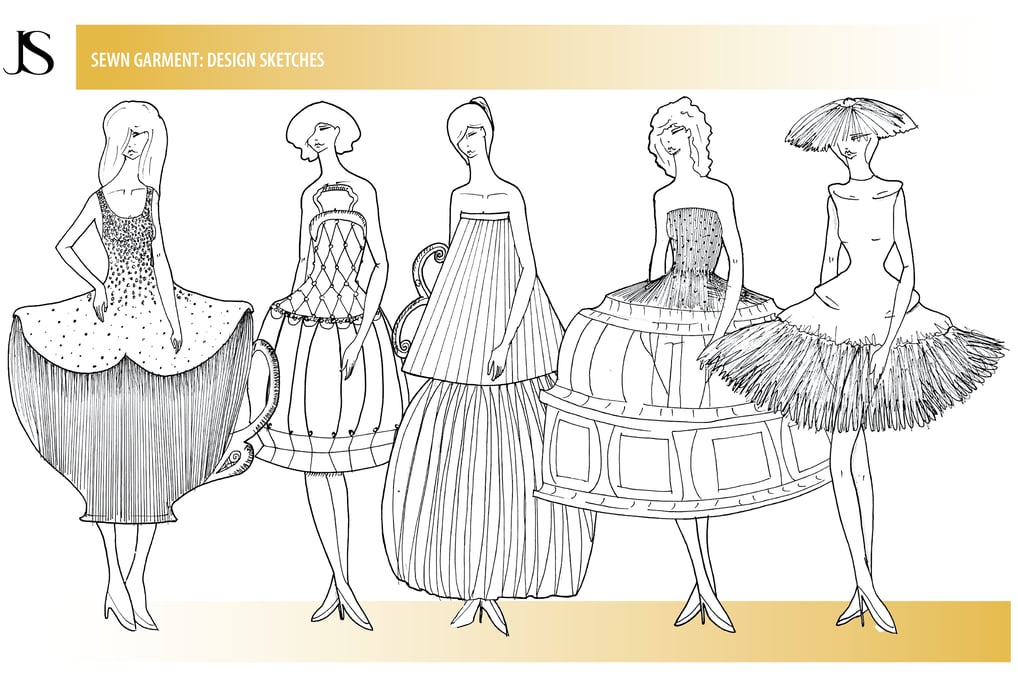

I drew inspiration from teacups, kettles, and the silhouettes of ballerina skirts, incorporating these elements into the design to capture the elegance of Victorian ballrooms.
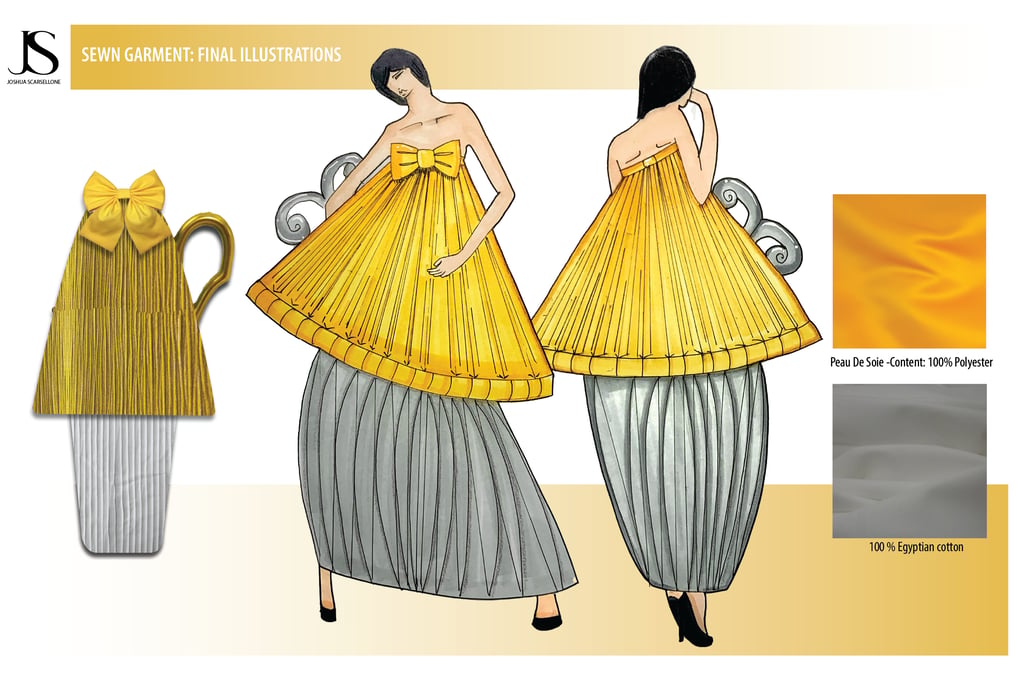

In my final design, I began with a collage, experimenting with different materials and colors to develop the concept. I chose peau de soie fabric for its beautiful light reflection and vibrant yellow hue, enhancing the overall elegance of the design.
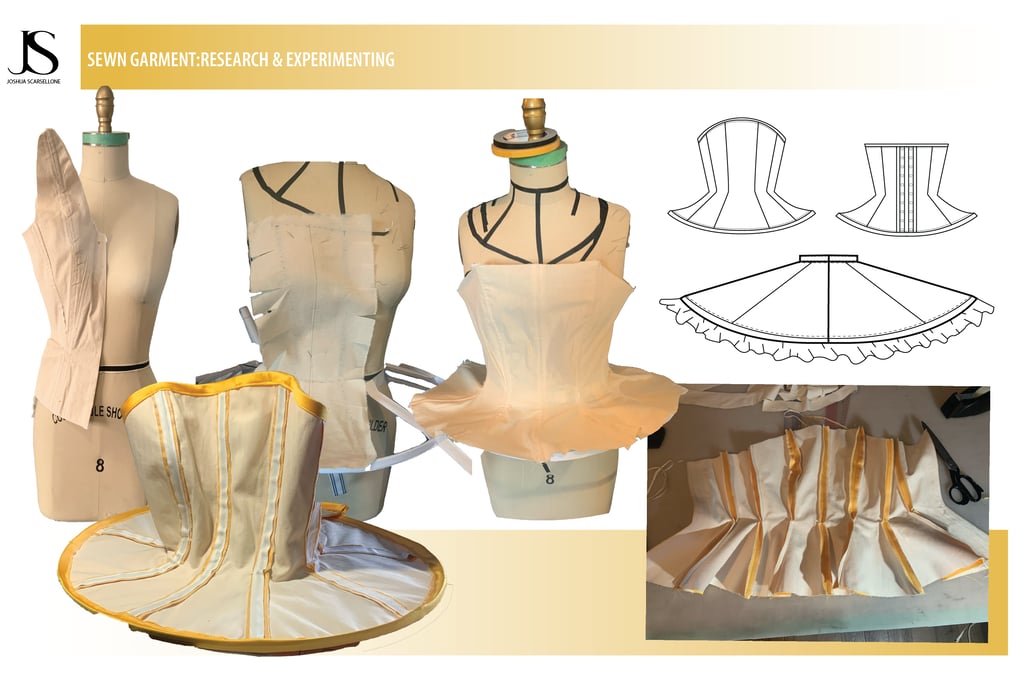

To achieve the desired silhouette, I began by constructing the cage, carefully balancing the materials to avoid uneven lumps. After draping fabric over it, I created a muslin draft, added boning casings, and inserted metal wire, but it couldn’t maintain the circular shape. I switched to hoop steel, applying the same technique used for the cage to the corset and bodice, ensuring a cohesive, structured silhouette.
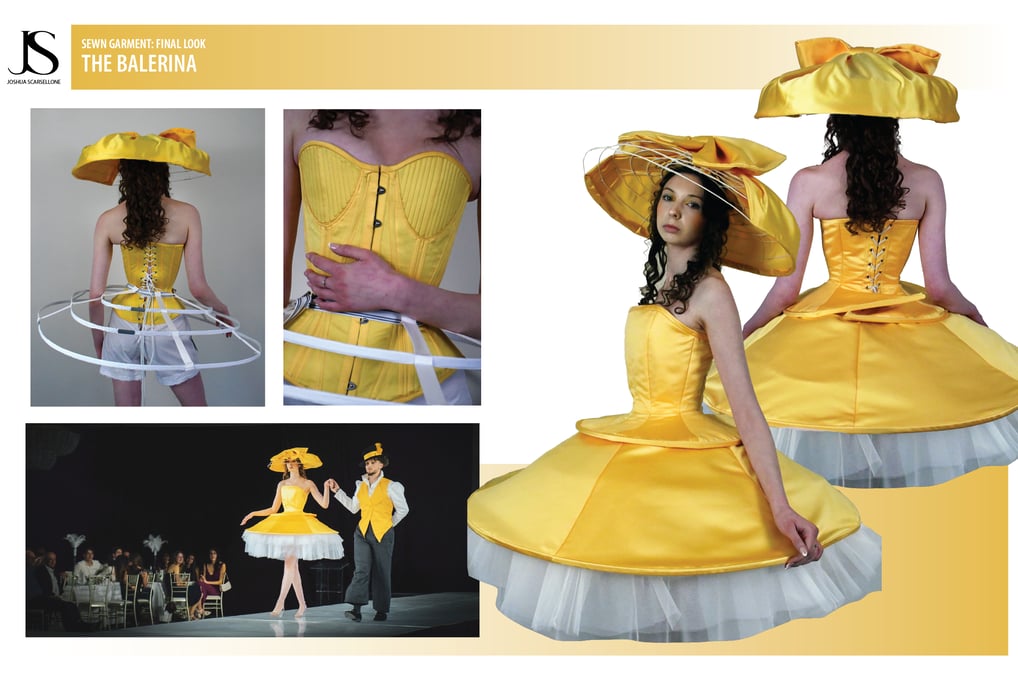

To achieve the desired silhouette, I began by constructing the cage, which required extensive adjustments to maximize the circumference while maintaining a perfect circle. Using too much steel caused the circle to form uneven lumps, so I carefully balanced the materials to achieve a smooth and consistent shape.
Once the cage was complete, I draped fabric over it to determine the required length and extension. After creating a muslin draft, I added boning casings and inserted metal wire. However, the wire failed to maintain the perfect circular shape I was aiming for. To resolve this, I switched to hoop steel, replicating the same technique used for the cage, and applied it to the corset and bodice. This ensured a cohesive and structured silhouette throughout the entire design.